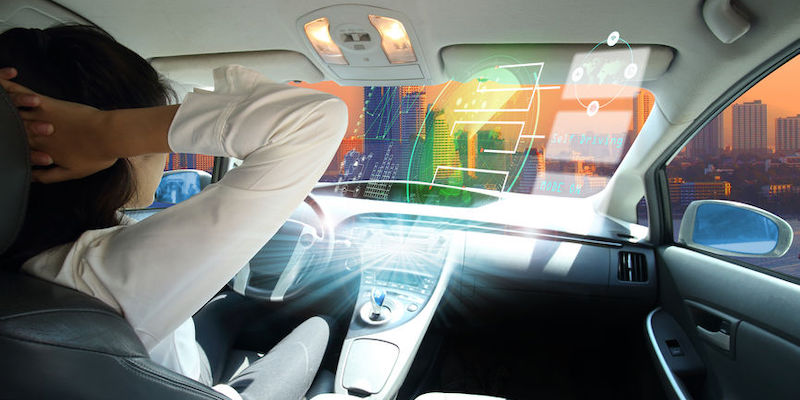Almost 94 percent of American automobile accidents happen because of human error.
The Benefits and Risks of Autonomous Vehicles
Driverless-car technology promises many benefits, including shorter commuting time, less traffic congestion, and a drop in harmful emissions. But are autonomous vehicles really safer than those operated by human drivers?
Levels of Automation
Before we can consider the safety of autonomous vehicles, we must identify the levels of vehicle autonomy.
- Level 0. The driver is fully in control of the movement of the vehicle. But its capabilities may include emergency braking, blind-spot warning, and lane-departure warning systems.
- Level 1. The driver is responsible for most driving tasks. But the vehicle has one driving-assistance feature that affects the movement of the vehicle, such as adaptive cruise control or a regulator that helps a vehicle to stay in its lane.
- Level 2. Vehicles with Level 2 autonomy, or partial-driving automation, are equipped with several advanced driver-assistance systems that can control steering, acceleration, and braking in certain conditions. But the driver must participate at all times by monitoring system performance and by being prepared to take over the operation of the vehicle at a moment’s notice.
- Level 3. Certain driver-assistance systems are programmed to make decisions independently on the basis of cues from the environment. Although Level 3 autonomy means an essentially a driverless system, a human driver must be present and be able to take control of the vehicle in the event of an emergency due to system failure. This level of automation is not yet authorized for use on U.S. roads.
- Level 4. Vehicles with Level 4 autonomy or high-driving automation require no human interaction to operate the vehicle. The automation is designed to allow the car to travel in self-driving mode within specific mapped boundaries called geofences. Although a Level 4 vehicle is fully autonomous, it still contains normal driving equipment, like a steering wheel and brake pedal. These enable a human driver to take control if he wants or needs to.
- Level 5. Vehicles with Level 5 autonomy are fully autonomous and omit driving equipment like steering wheels, pedals, mirrors, and windshields that could enable a driver to take control. Unrestricted by geofences, such vehicles will transport humans comfortably and efficiently without requiring a human being to do any driving or monitoring. The only task o a human “driver” is to determine a destination.
Benefits and Risks
According to the U.S. Department of Transportation and the National Highway Traffic Safety Administration, 94 percent of automobile accidents on American roads happen because of human error. If and when fully autonomous vehicles are widely adopted, we should see fewer instances of impaired driving and the use of more direct and faster routes to destinations. The results would be better fuel efficiency, lower costs, and fewer accidents and fatalities.
But autonomous vehicles aren’t perfect. Some of the risks associated with their use include a false sense of security that could lead to complacency and collisions, increased exposure to electromagnetic radiation, and the susceptibility to computer hacking and other malfunctions or mechanical glitches.
MyCarQuest reports that security researchers have demonstrated the feasibility of hacking a Jeep Cherokee. “From the comfort of their couch, more than 10 miles away, the two ‘hackers’ were able to mess with the AC, windshield wipers, radio before shutting off the engine while the Cherokee was being driven down the highway. More than 1.4 million cars were recalled after that demo to have anti-hacking software installed.” Although such hacking is still a rarity, the experiment shows the potential for mayhem if automated systems are inadequately safeguarded.
Contact an experienced Colorado personal injury attorney.
If you or a loved one has been injured in an accident, contact the Law Offices of Daniel R. Rosen online or call 303-454-8000 or 800-ROSEN-911 to schedule your free initial consultation with an experienced personal injury attorney today.

